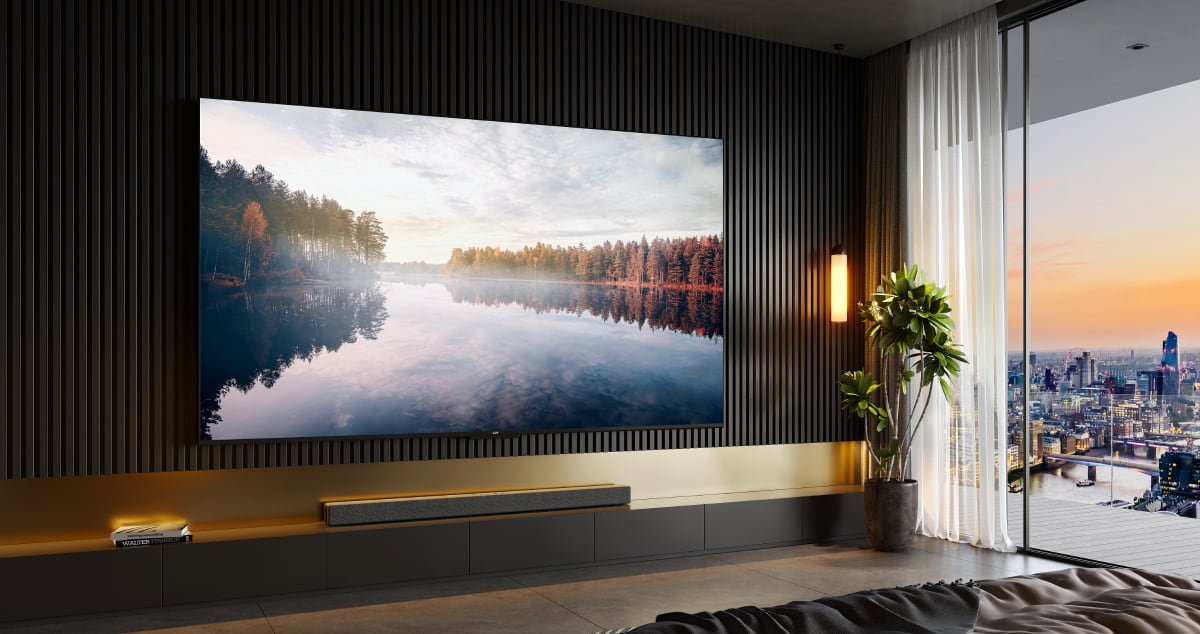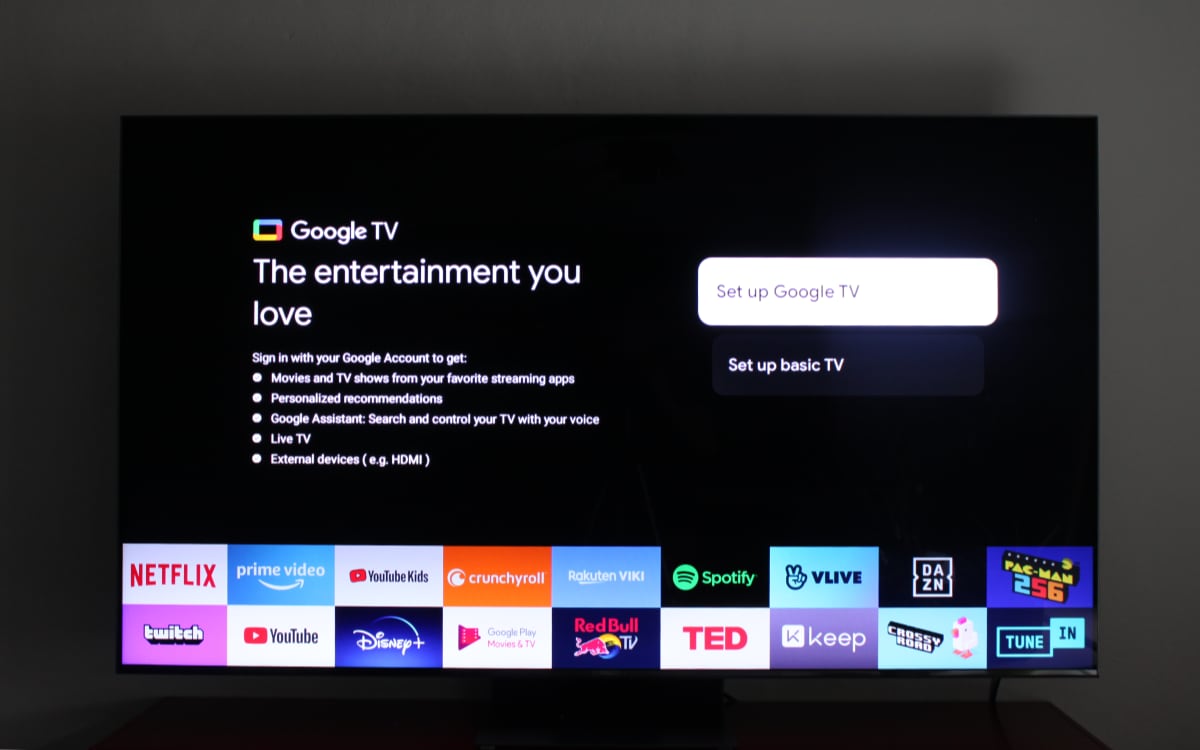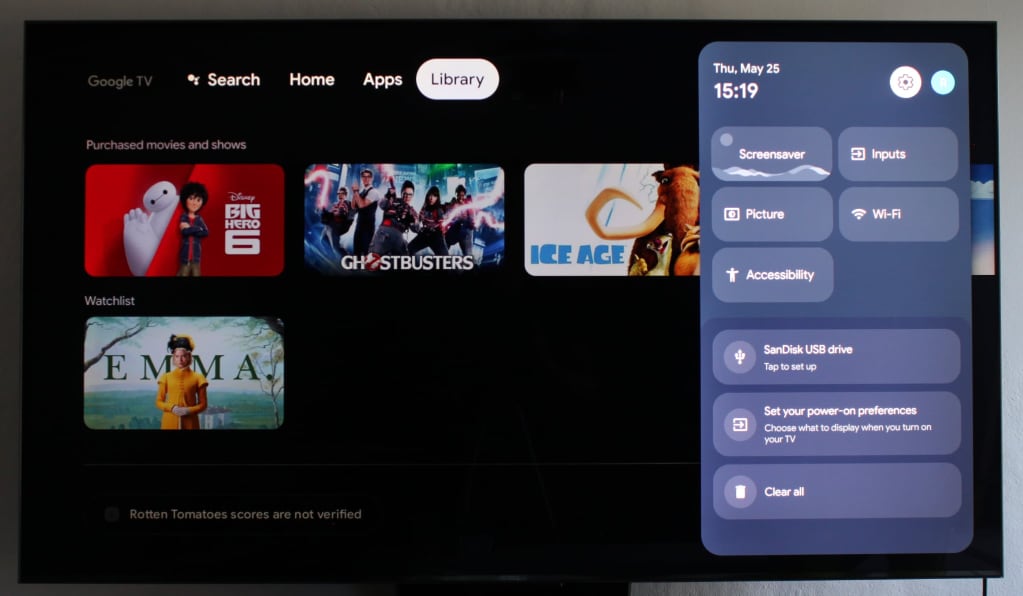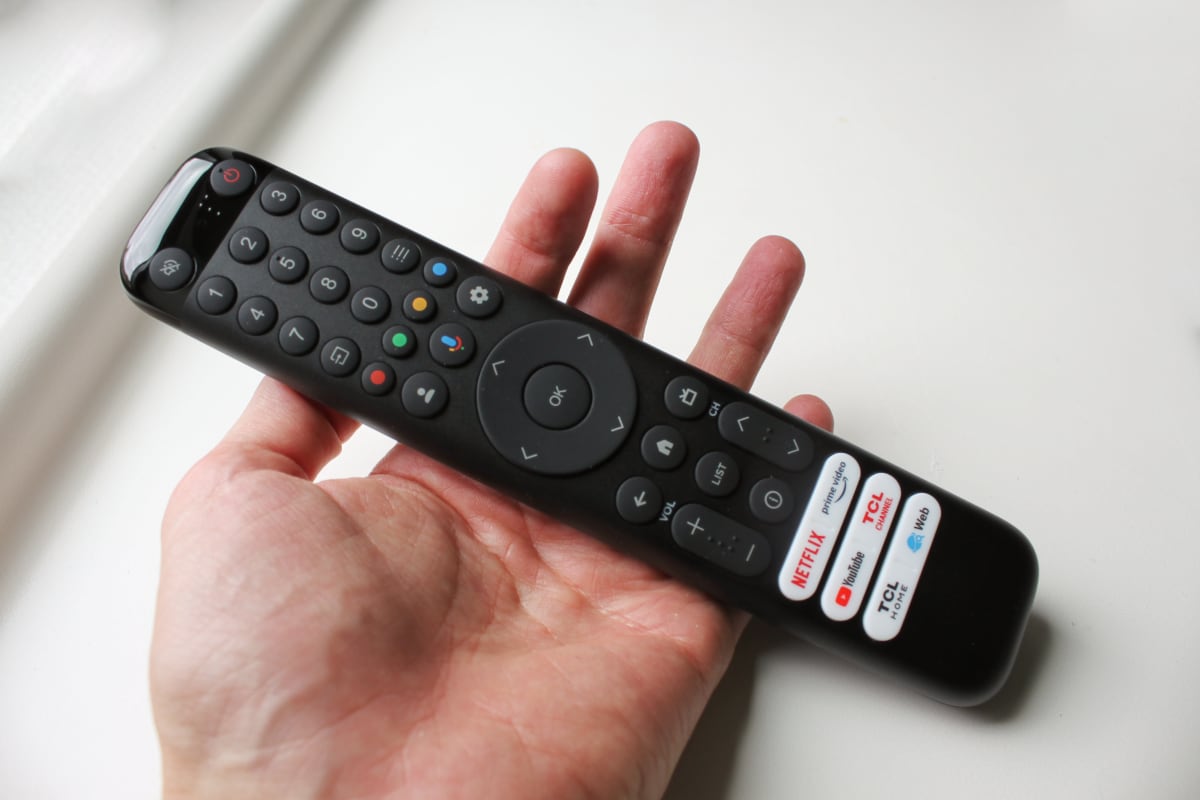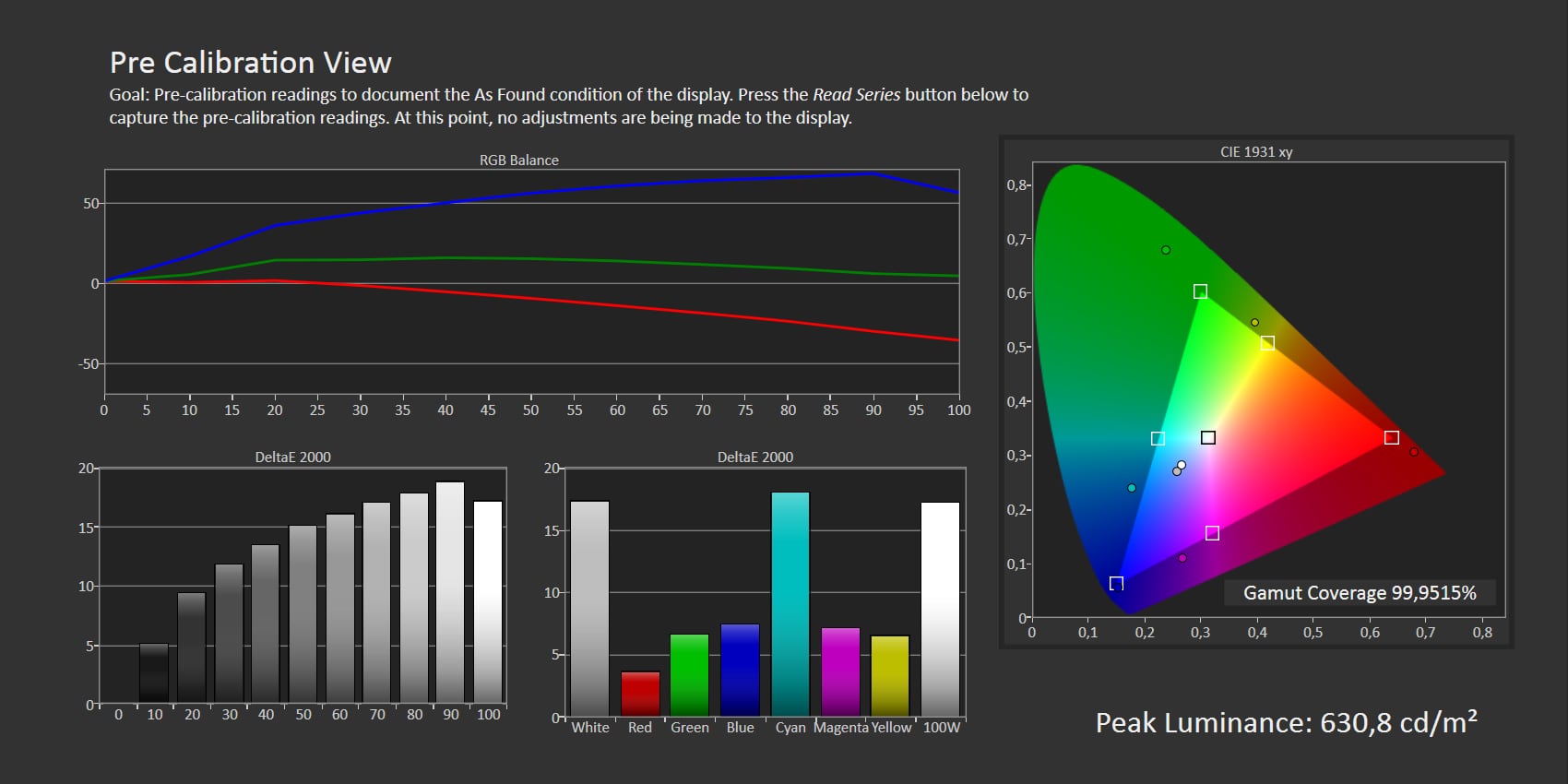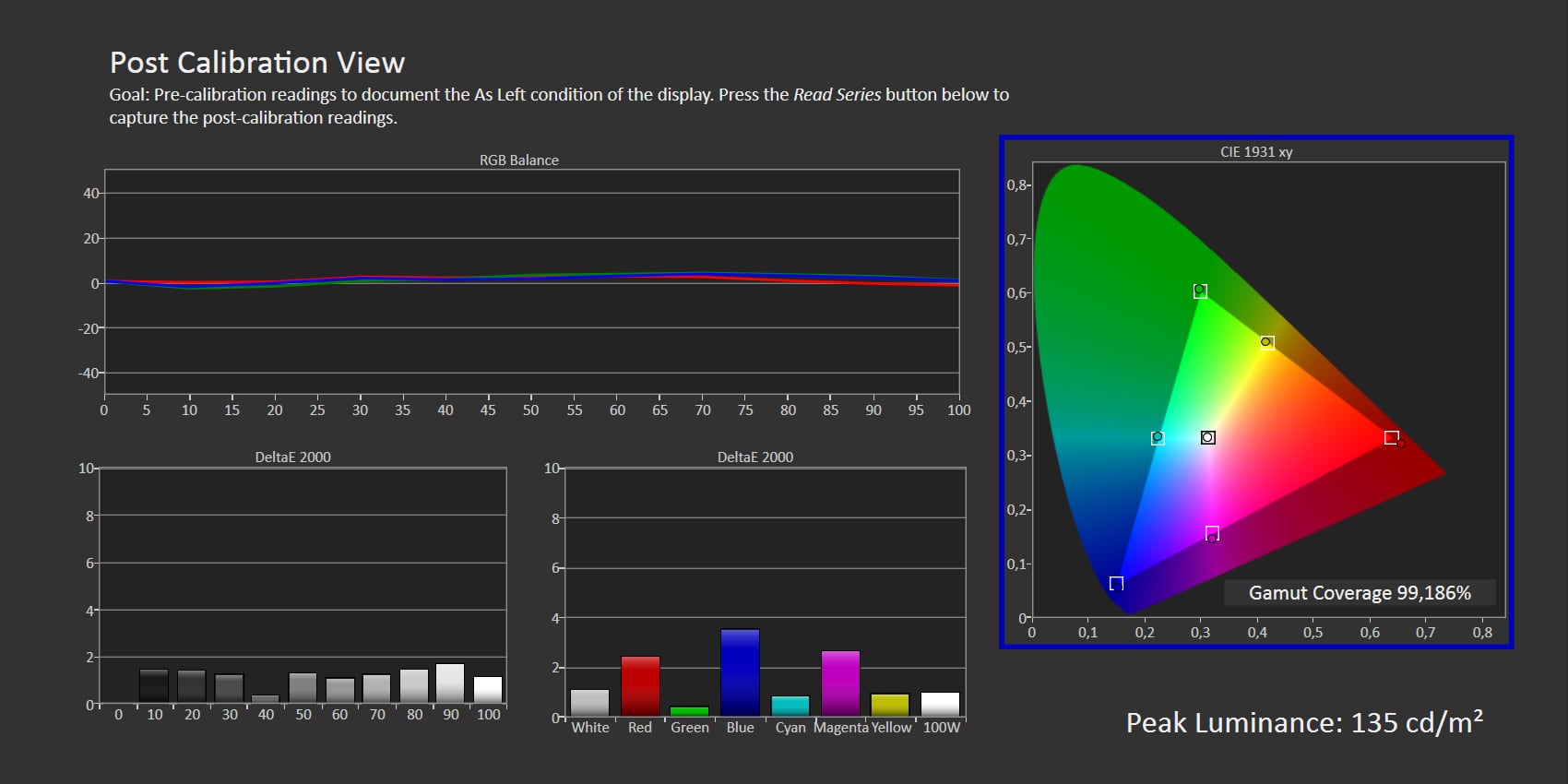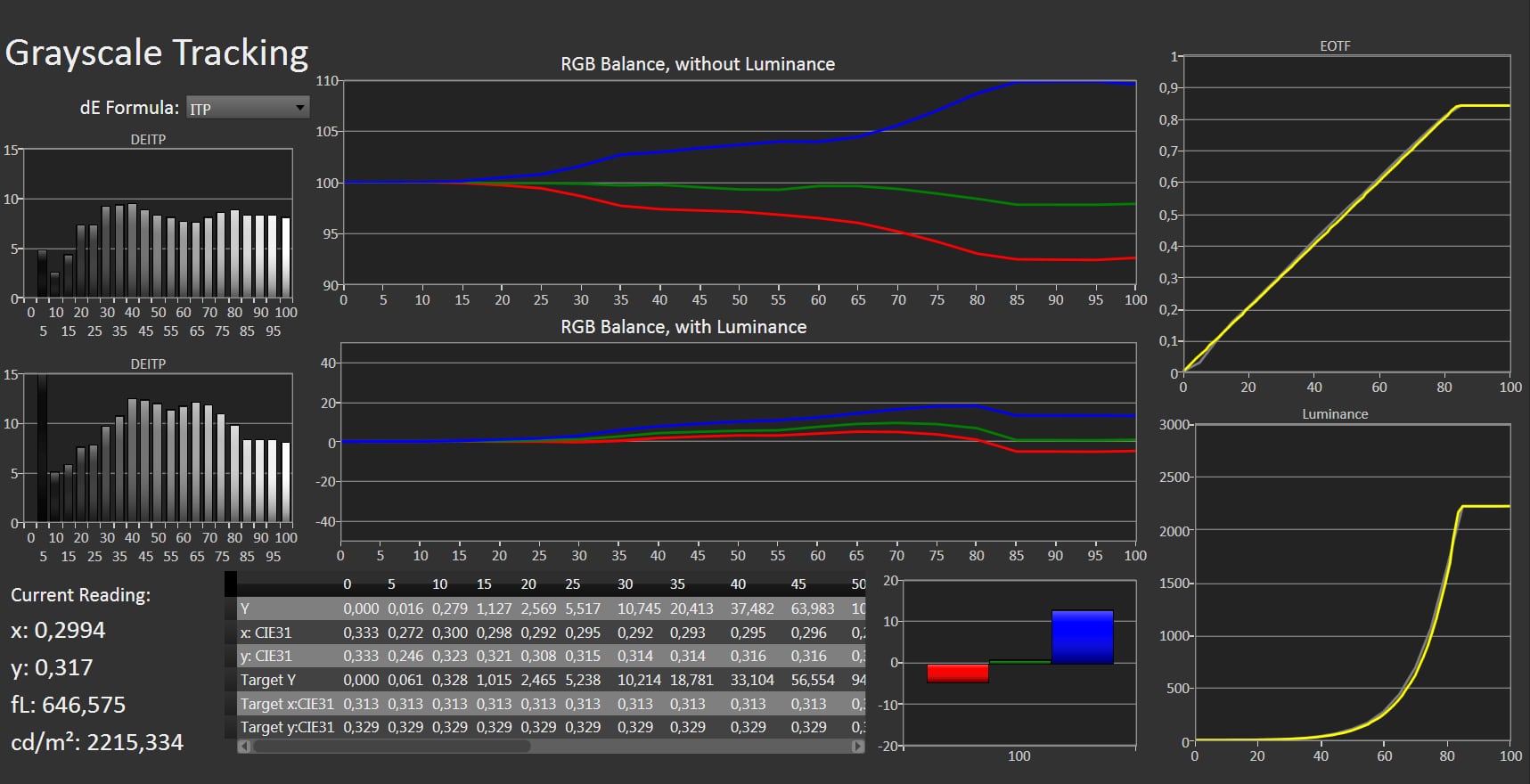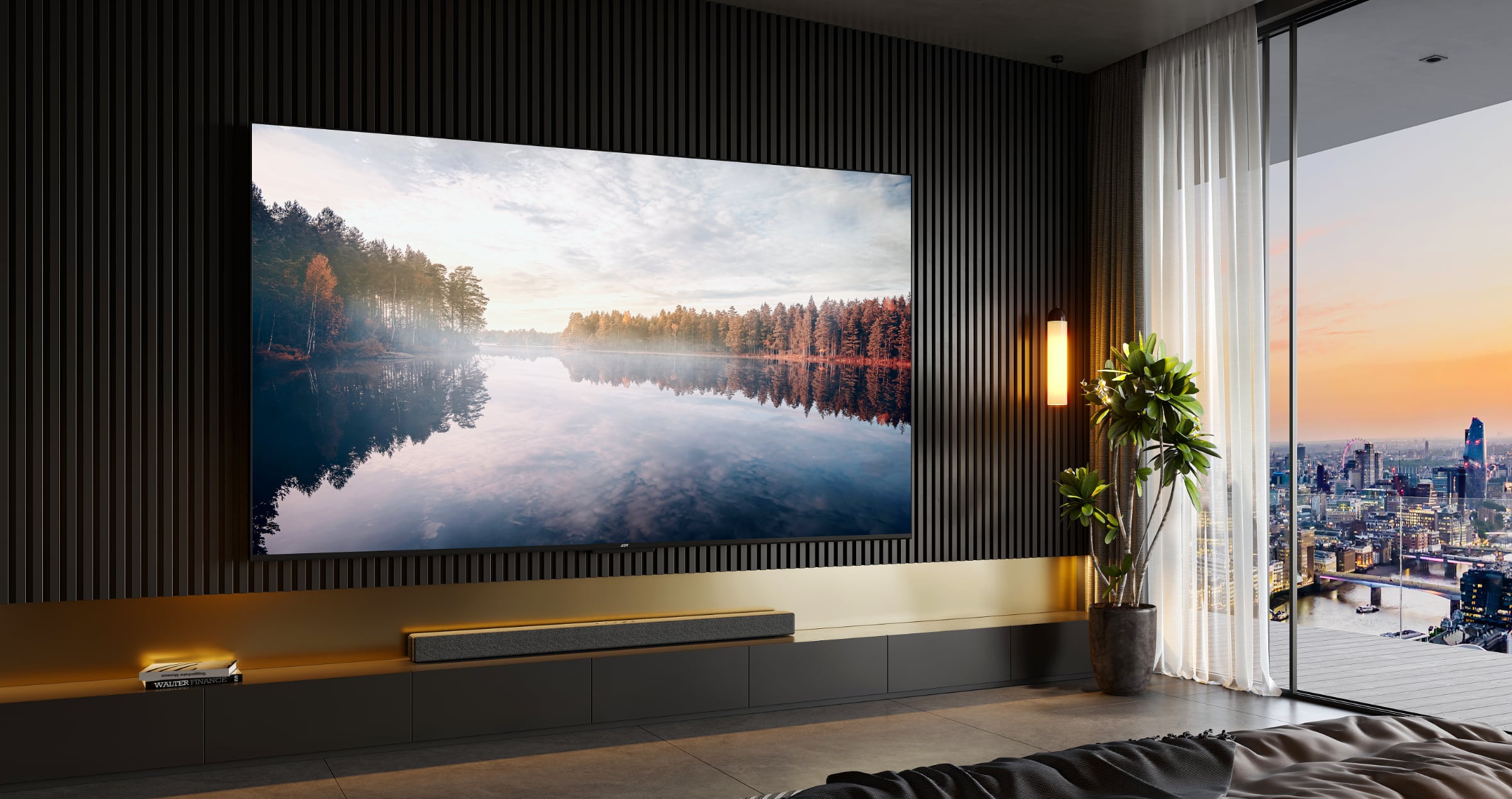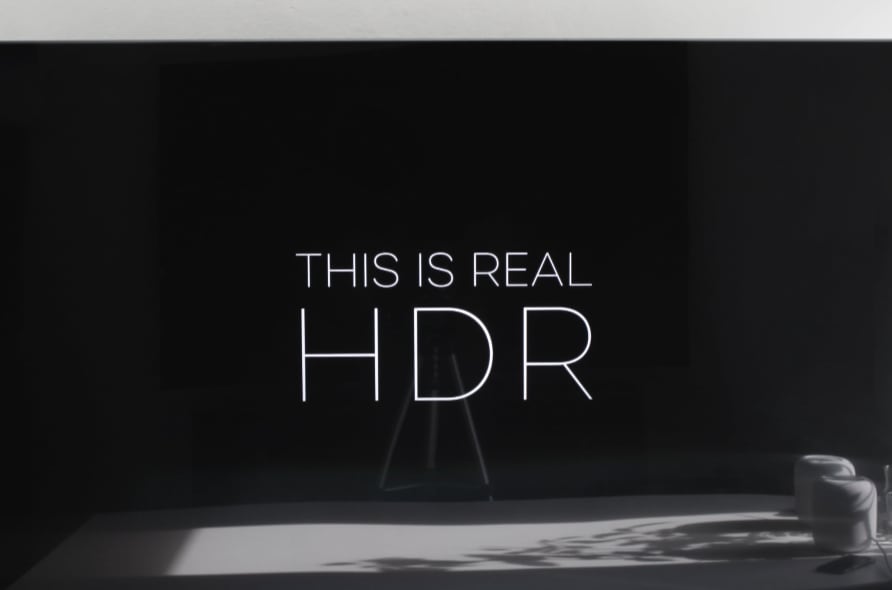Review: TCL C845 (miniLED LCD)
With its 2023 line-up for Europe, TCL is bringing zone dimming to more LCD models and increasing the number of dimming zones in C845 – their mainstream high-end model. C845 runs Google TV, features two HDMI 2.1 ports, and also has a new gamebar menu. On paper, it looks like a good package that competes head-to-head with Sony's top LCD models and Samsung's 'Neo QLED' LCD models but at a significantly lower price. TCL C845 exists in 55 to 85 inches. FlatpanelsHD has tested the 65-inch version.Price and retailers:
First impressions
TCL C845 has a design that resembles popular LCD models from especially Samsung with its slim frame and silver aluminum side-bezel. Confined by the physical, rigid characteristics of the LCD panel and LED backlight, there is only so much you can do in TV design and considering that some competitors actually use TCL-produced LCD panels the similarity should not come as a surprise. The back has a clean and relatively streamlined look in dark grey plastic with a plastic cutout in the center made to look like an Onkyo bass port – the actual speakers are hidden inside the electronics box. The flat center-aligned stand has a coated surface and provides a solid foundation under the 65-inch C845 that we tested. The ports all face to the side so they remain accessible even when the TV is mounted on a wall bracket. Only two of the HDMI ports support HDMI 2.1 bandwidth for 4K 120Hz and VRR signals from a game console or a future media player. Unlike competitors, TCL has relocated the ARC/eARC port for audio output to one of the non-HDMI 2.1 ports meaning that both of the two HDMI 2.1 ports can be used for HDMI 2.1 sources even if you connect a soundbar or receiver. The downside is that if a future Apple TV 4K, for example, employs HDMI 2.1 for 4K120 and you also want to use the box's eARC feature to act as a receiver for wireless speakers (HomePods), you will be forced to choose between 4K120 and eARC. The only "correct" approach here is to have all four HDMI ports support 4K120 bandwidth – like LG and Samsung. There is only one USB port in C845. This is the first TCL TV that we have reviewed in-depth on FlatpanelsHD so I can only comment on TCL's progression from our experience with TCL TVs at trade shows, presentations, and friends' houses, but our impression is that TCL has covered a lot of ground in recent years in terms of design and build quality, and I think C845 is a testament to that. It is not a beautiful TV, but for a mass-produced TV at a relatively affordable price it looks neat.User experience & features
TCL C845 is a Google TV running Android 11 and equipped with the MediaTek MT5889 SoC with 3GB of RAM and roughly 21GB of free storage after setup – a little more storage than many other Google TVs but still not a lot. TCL has yet to detail plans to transition to MediaTek's newer and more powerful Pentonic chips, so what you get in C845 is a chip fairly similar that the chips in Google TVs from Sony and other wellknown brands. It is a decent chip for video streaming and similar tasks, but it is only powerful enough to run simple games. Since it is a Google TV, C845's homescreen looks identical to Google TVs from Sony and others. In the US, you have 'For You' and 'Live' tabs at the top but in most other regions these tabs have yet to launch. Google TV provides access to all of the popular apps including Amazon, Apple TV, Disney+, Max, Netflix and YouTube from the Google Play Store where you find only TV-optimized apps. Mobile apps cannot be installed from the store but can be side-loaded if you really want to – just know that their user interfaces are not optimized for the TV screen. TCL Google TVs have previously been criticized for bugs and performance issues and in the US the first-generation TCL Google TVs were briefly removed from shelves while TCL worked to finish a software update to fix the most glaring issues. The good news is that TCL has come a long way since 2021 and we did not encounter major issues during our time with C845. There are still some quirks here and there including a sporadic bug that prevented us from downloading apps from Google Play but it could be rectified by restarted the TV. Overall, TCL C845's menus felt snappier than Sony X90L's menus – both are Google TVs. We ran some benchmarks to compare TCL C845 to other Android/Google TVs, Nvidia Shield and Apple TV 4K (2017).As you can see, the CPU performance (Geekbench 4) is not far behind the MT5895 used in the majority of Sony's 2021, 2022 and 2023 models and only approx. 35% behind the Nvidia Shield for single-core CPU performance. However, even the 1st generation Apple TV 4K is in an a different league. As for GPU power, the MediaTek MT5889 in TCL C845 is very weak and not designed for gaming on local hardware. In this area it is far behind Nvidia Shield. No matter how you slice or dice it Google TV looks and feels more or less the same across the different TV brands today. Compared to Sony X90L that was standing next to TCL C845 throughout our review, the only noticeable visual difference on the homescreen was the extra 'Sony' tab at the top and the fact that the search icon is positioned to the right on the Sony TV while TCL has the search icon to the left.TCL C845 - CPU/GPU benchmark
FlatpanelsHD
GeekBench 4 3D Mark - Slingshot Extreme GFXBench - Manhattan 3.1 (offscreen) GFXBench - Aztec Ruins (offscreen) MediaTek MT5889 (TCL C845) Single: 929
Multi: 2256423 277 frames 173 frames MediaTek MT5895 (Sony XH90, X90J, X90K, X90L) Single: 1195
Multi: 28821148 958 frames 605 frames Nvidia Shield TV Single: 1400
Multi: 41004250 2765 frames 2250 frames Apple A10X (Apple TV 4K 1st Gen) Single: 4000
Multi: 9500- 4500 frames 3300 frames You may recognize C845's quick menu from Chromecast with Google TV or Sony TVs. Photo: FlatpanelsHDTCL has pre-installed installed a few of its own apps including a web browser called BrowseHere and an app for managing smart home devices called TCL Home. TCL has also partnered with Apple for AirPlay 2 to let you wirelessly push content from an iPhone/iPad onto the screen and Apple HomeKit to let you control certain features of the TCL TV via your iPhone/iPad. Like LG and Samsung, TCL offers a fairly large selection of free channels with ads that can be streamed over the internet. You can access these with the 'TCL Channel' button on the remote and it works but it's a strange thing that you cannot use the channel up/down buttons to navigate the internet channels – the channel buttons are reserved for classic broadcast channels received via the tuner. Here is a brief video of Google TV in TCL C845: It is also worth highlighting that C845 features both WiFi 6 and Bluetooth 5.2. AV1 decoding worked as advertised but there is no hardware support for VVC (H.265).Operation
With its rounded corners, TCL's 2023 remote control looks playful but also a little cheap. The myriad of hard rubber buttons, including six sponsored buttons that stand out in white, make it appear chaotic. The most important buttons are centered and easily accessible but the buttons at the top and bottom require you to slide the remote in your hand to reach them, which is not ideal. TCL's remote works and is fairly similar to the remote of other brands but our advice to TCL would still be to focus more on this area and drastically reduce the number of buttons by at least a factor 3. The remote is after all what physically connects the viewer to the user interface on-screen.TV audio
TCL C845 is equipped with 2.1-channel speakers; stereo plus a subwoofer all hidden and marketed as an Onkyo system. On paper, it has 2x10W effect for TV content plus 20W bass. Unlike some TV makers, TCL offers supports for both Dolby and DTS audio formats including Dolby Atmos. If you want to output Dolby or DTS audio to a soundbar or receiver note that HDMI eARC, which is required for multichannel PCM, did not activate automatically for us as TCL's HDMI Control (CEC) setting was deactivated. eARC should in theory work without CEC enabled, but in C845 it did not. Enabling CEC also meant that we could turn on C845 via another device such as a media player. You can activate it under Settings -> Channels & Inputs -> Inputs -> External Devices Control -> Activate HDMI Control. HDMI CEC and eARC now worked as intended with a pair of HomePods (2nd Gen) and Apple TV – more on that in a separate review. As for C845's internal speakers, they are fairly average. It helps to have a separate bass unit but it still has clear limitations. At times, the speakers lack definition and tend to sound almost as if they are trembling, and things tends to sound trapped at high volumes. I would personally not use the speakers for music but for casual TV viewing they may satisfy you. For watching movies and series and for playing games I would say that a separate speaker system is a must for a TV like C845.Calibration
TCL C845's default picture mode is 'Low Power', most likely to satisfy the EU's energy requirements. As seen in our measurements, 'Low Power' is not very accurate and it pulls all SDR content into the TV's native color space meaning that colors are boosted and not accurate. You should also avoid 'Vivid' mode. We quickly switched to 'Movie' which is much more accurate, although still with some color errors and a slightly too high color temperature. The default SDR brightness, with the light sensor turned off, is also quite extreme at almost 1600 nits but it's easy to adjust for any user. 'Movie' mode should satisfy most users but as we normally do in review, we took advantage of the basic calibration options to see how we could improve things and be able to share a calibration suggested with readers. We do not use the most advances calibration options in reviews as these are specific to the sample and cannot be shared with other TVs out in the living rooms. As you can see, we managed to get a quite good SDR calibration result although the TV is still pushing the red primary a bit – it requires an advanced calibration to get spot-on. TCL's 'Game' SDR picture mode is fairly accurate out-of-the-box and we must praise TCL for not falling for the temptation to significantly boost colors as some other TV makers do including the most direct competitor Samsung. However, SDR brightness is extreme at 2400 nits so you should dial that way down. As for HDR, the default 'Low Power' picture mode significantly over-brightens HDR pictures which is contrary to the name, so switch to 'Movie' for the most accurate out-of-box HDR mode. Again, 'Game' HDR mode is quite accurate, although slightly over-brightened and notice that TCL is raising the darkest tones (upper right graph) to make dark grey tones easier to see and discern while gaming. While this may be an advantage for highly competitive multiplayer gaming to be able to see enemies in the dark, it negatively affects the picture quality in games such as Diablo or The Last of Us. Such modifications to the light curve should be manual setting options that gamers can flip on, if they want to, instead of the default. 'Dolby Vision Dark' is the most accurate mode for Dolby Vision content. We measured up to 2750 nits peak brightness in Movie mode but only on a 25% window, and as we often say the quality of nits is more important than the quantity of nits – more on that in the picture quality section. As seen in the measurement table, LCD TVs have a bell-shaped ABL (Average Brightness Limiter) for brightness whereas OLED TVs have a flat ABL curve up to somewhere between 10% and 25% APL (Average Picture Level) after which brightness drops. This is the first TCL TV that we have dedicated time for to do in-depth review so to summarize my first impressions in terms of pictures modes, pre-calibration and calibration options I would say that I'm positively surprised by TCL's choices. TCL could easily have boosted colors into the stratosphere, although brightness tends to be pushed too hard. On the other hand TCL – like other TV makers – has too many picture modes including the sponsored IMAX mode. It should also be noted that TCL a couple of years ago started partnering with SpectraCal for Calman auto-calibration, the so-called 'Calman Ready' program, meaning that you can easily calibrate the TV if you own the equipment as the test patterns required are built-in. We measured DCI-P3 and Rec.2020 coverage to 94% and 72%, respectively, which is in line with other high-end LCD TVs but not close to QD-OLED.Other picture modes
Click the title to expand the view
Movie (SDR) Game (SDR) Low Power (HDR) Game (HDR) IMAX (HDR) Measurements
In our "measurements" section we include all measurements and our suggested calibration settings. If you want to learn more about our test methodology click here. Note: Starting in 2021, we implemented a new method for measurement of average power consumption in SDR and HDR, meaning that earlier measurements are not 1:1 comparable. Power consumption in 'Calibrated' SDR mode is measured with the screen to approx. 100-120 nits to normalize the measurement across TV models (our recommended calibrated picture settings may differ). The new method will be used in all TV reviews going forward.Note: We include calibration settings only for SDR, not HDR. For our calibration we have deactivated the ambient light sensor that automatically adjusts the backlight setting according to your environment. You may prefer to have it enabled.Picture quality
What's inside a TCL TV? To the surprise of many, I think, TCL is one of the leading manufacturers of LCD panels worldwide through its subsidiary TCL CSoT, so we are not dealing here with just another brand who buys panels from others. TCL is essentially following the playbook of the South Koreans (LG, Samsung) when they outcompeted or overtook the Japanese (Sharp, Toshiba, Pioneer, Panasonic, Sony). TCL along with fellow Chinese display makers have now outcompeted the South Koreans in LCD production; Samsung Display has already stopped entirely producing LCD panels and LG Display is very close to abandoning LCD panel production. LG Display and Samsung Display have instead moved on to more advanced OLED panels, an area where TCL has yet to follow. What it means is that inside, for example, Samsung's LCD TVs including "QLED" models and Sony's LCD TVs are now more and more often an LCD panel from TCL. In theory, you should be getting close to the same display technology for a lower price with TCL but in practical terms there are of course also other parameters that come into play including the LED backlight unit, video processor, pre-calibration, and more. All these factors must be considered and examined in a review. I'm putting emphasis on it here because this was what struck me first: In terms of picture quality and performance TCL C845 is very similar to some of Samsung's high-end "Neo QLED" LCD TVs (with VA panels), despite a brand new 65-inch C845 carrying a price tag less than half of Samsung's brand new QN90C and almost a third of Samsung's brand new QN95C in many European markets! If we start with HDR picture quality, because this is where miniLED comes into play, TCL had already confirmed that C845 features 480, 576, 720, 896 dimming zones in 55, 65, 75, 85 inches, but of course we always count and examine ourselves. On our 65-inch sample, we counted 48 zones horizontally and 12 vertically for a total of 576 zones. It checks out. 576 miniLED zones on a 65-inch LCD is a decent amount by 2023's competition and it helps to increase contrast and peak brightness in many HDR scenes, enabling HDR picture quality. However, 576 zones is not nearly enough to eliminate blooming and related backlight issues including luminance and color shift when the zones start to flex and crushed black details in other scenes. We recently reviewed Sony X90L where we said that its performance including its 80 zones was not enough to cross the bar for what we believe is HDR picture quality. TCL C845 does cross that bar. Obviously, C845 with its brightness capabilities shines in bright movies and game scenes including a landscape bathed in sunlight or a colorful animation movie, but fully illuminated bright scenes really have very little to do with HDR. What is relevant is how a display handles scenes with high contrast – also known as high dynamic range – and here it has enough zones to handle many scenes respectfully but not enough zones to handle other scenes without issues, such as a starry sky. It's always a compromise between engaging the miniLED zones too much, which raises peak brightness but in turn creates halos/blooming and color/luminance shift (see below), or engaging the miniLED zones too little, which creates a picture without the signal-defined luminance in small bright objects in the picture (the starry sky below which did not really look HDR due to too high blacks and too low brights). Semi-dark HDR pictures on C845 can at times get a clouded/milky look but the effect is much less pronounced compared to, for example, Sony X90L. It happens when the zone dimming system gets confused about how to set the picture level in complex mainly very dark HDR scenes. It looks worse if you are not sitting directly in front of the TV. C845 supports four HDR formats (HDR10, HDR10+, Dolby Vision and HLG). After the launch of Apple TV 4K (2022), this media box has emerged as best solution for HDR10+ content as more or less all Apple TV+ titles are now in HDR10+ as well as many iTunes HDR movies, in addition to Amazon Prime Video and a few other apps. However, given that C845 also supports Dolby Vision we recommend that you set up Apple TV 4K (2022) for Dolby Vision instead of HDR10+ (when a source delivers both formats), as you have to select between them in the settings menu. After many hours of watching movies and playing games, I think TCL has reached an acceptable balance for its miniLED dimming zone algorithm based on the hardware limitation of 576 zones. There are good moments and bad moments, and the end results in terms of HDR picture quality will in large part depend on how and where you use a TCL C845, i.e. a bright living room or dark home theater, to watch mostly bright content or dark content. As for SDR content, the miniLED zone dimming system matters less here and C845 delivers a more balanced picture mostly without the dimming zone issues that you can encounter in HDR. This is partly because the VA LCD panel has a native contrast ratio of around 5500:1 and enough overhead in brightness to work even in a very bright living room. You will see reflections in the LCD panel as TCL is not using the same coating as Samsung's high-end models but on the other hand you do not get the same rainbow effects from especially pointed bright light sources in your room and overhead spots as with Samsung's moth-eye coating. Consider curtains if you feel that it's an issue. TCL's video processing is quite good but I would not put it all there way up there with Sony's. For accurate picture quality, you will want to disable the picture enhancement systems. C845 has a dynamic tone-mapping system for HDR engaged per default and my recommendation is to turn it off as it makes HDR pictures significantly too bright overall while it also tends to make pictures look a little too artificial by raising the brights and lowering the darks. TCL informs FlatpanelsHD that it has a significant update planned in Q3 2023 for the dynamic tone-mapping function in 2023 miniLED models, but we did not get a chance to evaluate it. In fast motion, especially bright scenes, C845 can exhibit the same 'stroboscopic effect' as OLED TVs, although less pronounced, and some other high-end LCD TVs including Samsung's – these employ a persistent scanning backlight system. It happens due to the combination of low frame rate (24fps in movies/series) and the panel's relatively fast response time. The solution would be for Hollywood to increase the frame rate from 24fps but that won't happen right now. You can manually mitigate it by activating TCL's motion system, Motion Clarity, set very low. There are some side-effects to this such as motion artefacts and stutter is still not completely eliminated. Personally, I preferred not to use Motion Clarity on C845 as the stroboscopic effect is less pronounced than on OLED TVs. C845 uses PWM (Pulse Width Modulation, or flicker) to control LED brightness. It also feature a BFI (Black Frame Insertion) mode called 'Clear LED Motion' but it produces very visible flicker and significantly lowers brightness. The systems highlighted above can lead to eye strain in my experience but it depends on your personal tolerance threshold. The video processor also supports 4K at 120Hz and 144Hz fixed as well as HDMI VRR and AMD FreeSync, which brings us to gaming. 4K120 worked fine with a game console such as PS5 or Xbox Series X but 144Hz is an advantage only with PCs. C845 supports 240Hz 1080p inputs, too, by using a novel concept to run the 4K panel at 1080p by alternating vertical pixel lines, but it is a stop-gap until true 240Hz panels arrive. It has only two HDMI 2.1 ports that support these capabilities. The other two have HDMI 2.0 bandwidth for up to 4K 60Hz. TCL has implemented an updated Game Bar 2.0 that provides quick access to gaming-related functions. We struggled to find it, having to actually ask TCL how. It turns out that you must long press the quick settings button (three rows) on the remote control. It works only if the TCL TV is in Game mode (Game Master). We measured input lag in Game mode to 15.4 ms for 4K 60Hz, down from 119.3ms in the other picture modes. Input lag will be lower in 4K 120Hz/144Hz and even lower in VRR – the input signal is a factor. Except for only two HDMI 2.1 ports, C845 in other words has a comprehensive set of gaming features built-in but like other high-end LCD TVs it struggles with gaming in HDR as the effectiveness of the miniLED zone system gets reduced significantly in Game mode and especially with VRR sources, affecting overall HDR picture quality including peak brightness and contrast – otherwise input lag would be too high. This is an often overlooked factor in terms of HDR picture quality on TVs. A general rule of thumb is that the panel's native performance – without support systems such as zone dimming – is what you should expect in HDR gaming and that's one of the main reasons why OLED TVs deliver much better HDR picture quality in gaming because there are essentially no support systems. Our sample of TCL C845 had good backlight homogeneity but we have no idea if other samples suffer from issues. The community of buyers should chime in after their purchase. The VA LCD panel in C845 has narrow viewing angles as seen in the pictures below so we do not recommend it for living spaces where some viewers sit to the side of the TV. Blooming gets a lot worse from angles.Conclusion
In our reviews of Samsung miniLED LCD TVs ("Neo QLED") we've concluded that for them to compete with OLED TVs in terms of picture quality the number of LED zones must be dramatically increased or the miniLED LCD TV must be considerably cheaper than a comparable 4K OLED TV. TCL delivers in spades on that value preposition as C845 costs between half and a third of a Samsung's high-end 4K LCD TV despite still having 576 dimming zones for acceptable HDR and high brightness.Ad:It is significant but perhaps not so surprising considering that Samsung (and Sony and others) now source LCD panels from TCL CSoT. The Chinese display and TV maker is rising fast and while reviewing C845 we noticed a lot of similarities to Samsung's high-end LCDs – the main difference being Google TV. C845's design looks fine, the remote is acceptable, the speakers are not great, but the picture quality is very similar at a fraction of the cost. On the other hand TCL C845 does not match popular OLED TVs in terms of picture quality and it is limited to only two HDMI 2.1 ports. The company has not yet migrated to the more powerful MediaTek Pentonic 1000 chip and we still encountered some minor software quirks with Google TV. If you are avoiding OLED TVs for whatever reason, TCL emerged initially as a brand with value-for-money mid-range TVs and it is now bringing the same value-for-money concept to the premium LCD segment to challenge Sony and Samsung. Despite its limitations, we think you should seriously consider TCL C845 as an alternative to other high-end LCD TVs and we think it is worthy of our Highly Recommended Award due to its competitive price-to-performance ratio.Price and retailers:
Great SDR, decent HDR picture quality
Price
HDMI 2.1 ports, features
Google TV's app selectionminiLED blooming, too few dimming zones
Only two HDMI 2.1 ports
Old MediaTek SoC
Google TV limitations in most regions

